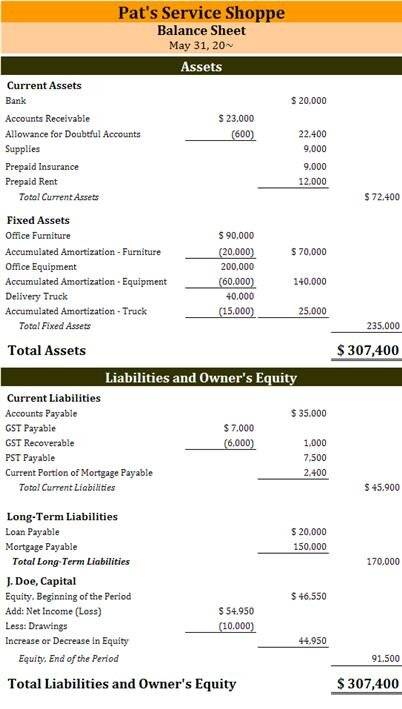
However, pattern discovery typically occurs after data have already been input into a data set, while text mining more often reflects both the collection and analysis of data. Cluster analysis could allow tax practitioners to analyze their or their client organizations’ potential state or other jurisdiction tax nexus. Clustering data using information on volume of sales to customers, purchases from suppliers, and employee compensation for various jurisdictions could provide insight into identifying jurisdictions where nexus could unexpectedly arise, or has arisen. This analysis could also identify jurisdictions for which changes in transfer-pricing policies could provide opportunities to optimize the organization’s average global tax rate. Big data helps bank to understand client requirements and prioritize them before business needs. This advances the feasibility of banking by carrying out customer segmentation and providing customers with improved financial solutions.
Accounting firms provide supplemental lessons and related classroom tools and solutions to professors that can be adopted into their coursework. These supplemental materials mirror what students can expect when they enter the accounting profession. This type of hands-on learning resonates greatly with accounting graduates while allowing them practical and applied experience with today’s accounting technologies. In-house training is the most common method companies are using to improve employees’ business analytics skills, according to a 2014 survey of more than 2,100 CFOs by staffing services firm Robert Half. Potential improvements include producing higher-quality audit evidence, reducing repetitive tasks, and better correlating audit tasks to risks and assertions.
The next frontier in data analytics
Or it can be a simple review of reports that outline projects and tasks from the previous year to predict how many staff people will be needed for the upcoming tax season. Simply stated, data analytics are what you learn from an analysis of data or data sets, whether you “crunch the numbers” manually or use data analytics tools. Franklin has developed exceptional accounting data analytics courses at the undergraduate and graduate level. The faculty at Franklin are experts in the field of data analytics and they work with students all over the world to bring the specifics of accounting data analytics to them in a very hands-on, relevant, current and practical way. At the same time, accountants may lack the know-how about educational resources and best practices. A great way to get started on applying data analytics to the audit function is to improve one’s knowledge of basic building blocks such as Excel and Access, and audit analytics tools such as ACL and IDEA.

The AICPA will use the findings from this initiative to inform guidance on audit data analytics for CPA firms of all sizes. First, it presents a survey of technology topics in accounting, including process mining, blockchain and applications in audit, importance of green building tax, and assurance. Next, the course explores visualization and basic analytics in audit and control testing using R and Alteryx. Next, the course examines the uses of text analysis in accounting and conducts text analysis using R and RStudio.
How analytics is transforming the accounting and finance industries
The truth is that CMAs earn 58% more than non-CMAs globally, so it’s a great investment in your financial future. Plus, CMA Exam Academy students have a pass rate that is nearly double the global average. These are just a few of the HR functions accounting firms must provide to stay competitive in the talent game. In this module, we discuss how text in accounting disclosure and other accounting information can contain useful information.
- By the end of this module, you’ll have a very strong tool kit that will help you try to detect financial statements that may have been manipulated by managers.
- Tangible actions — and critical business decisions — arise from prescriptive analytics.
- This new guide will carry forward much of the content included within the Analytical Procedures guide but will also include guidance on using audit data analytics throughout the audit process.
- If you’re looking for data analytics software for accountants specifically, then you might want to look into IDEA.
- In this article, we discuss how data analytics is changing the accounting profession and how you can adapt to this demanding industry skill.
This is important because banks have to constantly modify their plans of action from business-driven to customer-driven models. Big data not only accomplishes such tasks effortlessly, but it also improves the analysis of groups and data. Furthermore, identifying the financial issues in which big data has an impact is another important matter that this industry can discover and address with the impacts of business analytics in fintech.
Best Databases To Use In 2024: A Comprehensive Guide
She has worked with Tyson Foods, where she held various Information System roles focusing on business analysis, project management for ERP implementations and upgrades, and organizational change management. Data analytics are used by accountants to do things like discern patterns in customer spending, identify market behavior, anticipate trends and predict regulatory reactions. Applying Tableau assignments give students hands-on usage and skill-building within the free Tableau software. Students then have to answer critical-thinking and calculation questions, requiring manipulation and interpretation of data sets.

Utilizing data analytics skills and technologies in accounting supports strategic executive decision-making by providing key insights into a business and its markets. For example, DA software can analyze customer data to identify trends, helping organizations make more informed product development investments with optimal profit margins. It can help them to develop more effective sales and marketing strategies by providing insights into customer behavior, preferences and purchasing patterns. Accountants welcome opportunities to automate many of their work processes and are learning new data analytics skills to improve the services they offer their clients.
What is Big Data?
Thereafter, investment decisions can be made quickly and allowing businesses to react faster to opportunities and outsmart their competitors and the market. The Accounting industry is rapidly expanding, and understanding the role of Data Analytics in Accounting has become very crucial. The true value of data analysis comes not at the point when the data is compiled, but rather when decisions are made using insights derived from the data. To uncover these insights, a data scientist must first understand the business context. Accountants who can deliver all four types of analysis are able to provide sophisticated and measurably valuable skills to any organization. And as technology becomes more integrated with our daily professional lives, it will become a requirement to remain competitive.
Management accountants rely on data analytics to gain a better understanding of the performance of business units by identifying key patterns and trends. By monitoring key performance indicators (KPIs) such as operating cash flow, budget variance and line of business revenue versus target, management accountants can recommend business adjustments to improve performance. Their data-driven work is becoming increasingly vital in budgeting and forecasting, helping organizations plan for the future and make better decisions about resource allocation. In addition, the column links some specific areas of data analytics-related computer science to a business-oriented data analytics process.
I won’t try to repeat all that information here, but instead, I’ll distill down some information on Big Data as it applies to data analytics, and give you some things to think about as a tax and accounting professional. Becoming a successful accountant specializing in data analysis takes a certain amount of technical skill and critical thinking ability. You’ll need to be able to work within industry specific data analytic tools to help companies make good decisions. Collecting and collating large amounts of data takes time, discipline and a certain set of skills. Their knowledge and experience enables them to dive deep into the data and extract the value in it. Meanwhile, mastery of data analytics can help businesses generate a higher profit margin and gain a meaningful competitive advantage.